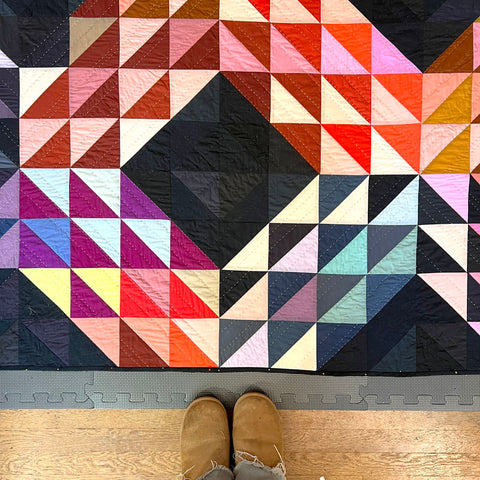
How to Block a Quilt

If you knit, you will know all about blocking. It's the act of getting your finished project wet, then securing it to a flat surface to dry in an effort to make it dry flat. Blocking a quilt is much like blocking a sweater you just knitted (not that I've ever knitted a sweater!). In my case, when I do this, my goal is for the quilt to be both flat and square.
Before I get started on the process I use, let me just put in a warning that this is what I do with my quilts and my washer. Everyone's projects, fabrics, prewash preferences and equipment are different and may yield different results! Okay? Okay!
I prewash all my fabrics before I make my quilt, most importantly the backing, as this will reduce shrinkage. When I'm ready to block, I wash my quilt on a cold gentle cycle. Unlike a lot of folks, I don't like that puffy, crinkley effect that happens when you heat dry a quilt, so I don't put my quilt in the dryer. When it comes out of the washer, I make sure it's not soaking wet and then I roll it up in a towel and gently press the excess water out.
Don't wring it! Just like your hair, fabric is most delicate when wet. Don't go crazy!
I bought these foam tiles that lock together like a puzzle and I connect them on my floor, lay out my quilt, and pin it to the tiles.
Remember the goal is flat and square, so you are going to need your measuring tape before you pin!
I measure my quilt from side-to-side, top-to-bottom and diagonally from corner-to-corner. It's important that when pinned to the foam pads, each measurement is equal or your quilt may end up a trapezoid.

|
I use regular pins to secure the quilt to the pads every three-ish inches along the edge of the quilt. Then I put a fan in my studio overnight and shut the door (there are too many cats in this house, they'd all be damp if I didn't!).

|
|
|
|





